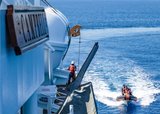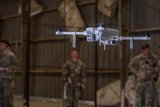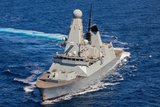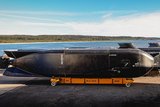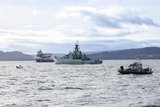Naval Warfare magazine: Arctic ops, destroyers, radar developments and more
Read the latest edition of Naval Warfare for free in our app or on your desktop. Register below to be sent the download link and receive future editions direct to your inbox.
Comment
With its firm focus on enforcing the Libyan arms embargo, the successor to Operation Sophia could place naval commanders in a complex moral (and legal) maze.
Features include:

The unfrozen North
As the ice caps in the High North continue to shrink, state actors are positioning themselves to take advantage of newly opened waterways into the resource-rich region.

A change of course
Currently tasked as a fleet air defence asset, the destroyer could see its role evolve yet again if Western navies adopt the distributed maritime operations doctrine.
Other features include:
Sunk assets
The world’s submarine fleets face new but decidedly familiar mission sets as navies transition to prepare themselves for high-intensity conflicts.
Gulf of expectation
The Gulf Cooperation Council member states’ approach to naval capability is split, with some nations content to sit under a largely US security umbrella, while others pursue development of their own vessels and subsystems.
Sharing is caring
The need to share detailed radar imagery among warships is growing in importance as naval warfare becomes characterised by high-speed missile threats.
In the dock
In a region beset by territorial tensions, as well as regular natural disasters, many navies in Asia-Pacific are realising the value of platforms such as landing platform docks.
Big shots
While the days of warships firing broadsides at each other may be long gone, the USN still sees a future for heavy artillery at sea.
Rich mixture
The available combinations of diesel, electric and gas turbine power solutions are a key consideration when defining the configuration of new naval vessel classes.

More from Naval Warfare
-
![MBDA-led DragonFire’s latest trials move the LDEW system closer to UK Navy integration]()
MBDA-led DragonFire’s latest trials move the LDEW system closer to UK Navy integration
The DragonFire lines up with other European laser-directed energy weapons being developed in collaboration with MBDA.
-
![How the Anduril-HHI autonomous ship plan fits in with the US Navy’s MASC programme]()
How the Anduril-HHI autonomous ship plan fits in with the US Navy’s MASC programme
The new modular vessel is expected to be developed for both commercial and defence use, with a heavy focus on production speed and mission flexibility.
-
![Indo Pacific 2025: Autonomous systems reigned but can the Australian Defence Force afford it?]()
Indo Pacific 2025: Autonomous systems reigned but can the Australian Defence Force afford it?
Multiple autonomous systems and technologies were on display at this year’s Indo Pacific, but questions remain over how the Australian Department of Defence will balance the books.
-
![How the UK Royal Navy is powering up its hybrid fleet to combat new threats]()
How the UK Royal Navy is powering up its hybrid fleet to combat new threats
Since it announced its move towards a new “hybrid navy” earlier this year, the force has announced a number of new uncrewed technologies in the works.








